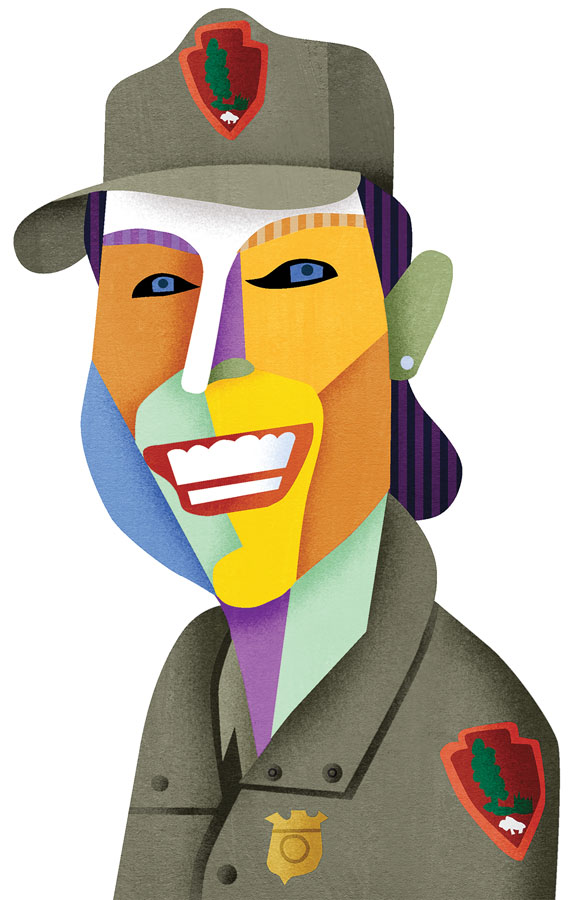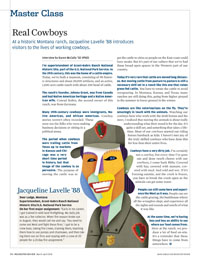Master Class
 (Illustration: David Cowles for Rochester Review)
(Illustration: David Cowles for Rochester Review)I’m superintendent of Grant-Kohrs Ranch National Historic Site, part of the U.S. National Park Service. In the 19th century, this was the home of a cattle empire. Today, we’re both a museum, consisting of 90 historic structures and about 30,000 artifacts, and an active, 1,600-acre cattle ranch with about 200 head of cattle.
The ranch’s founder, Johnny Grant, was from Canada and had Native American heritage and a Native American wife. Conrad Kohrs, the second owner of this ranch, was from Germany.
Many 19th-century cowboys were immigrants, Native American, and African American. Cowboy stories weren’t often recorded. These were not the folks who were making business decisions or sitting in a political arena.
The period when cowboys were trailing cattle from Texas up to markets in Kansas and Chicago was a very short time period in history, but that image of the cowboy is so pervasive. The purpose of moving the cattle was to get the cattle to cities so people on the East coast could have steaks. But it’s part of our culture that we’ve had these broad open spaces in the Western part of our country.
Jacqueline Lavelle ’88
Deer Lodge, Montana
Superintendent, Grant-Kohrs Ranch National Historic Site/U.S. National Park Service
On her first major assignment: “Early in my career, I got trained in wild land firefighting. My daily job was as a fee collector. When fire season broke out in August, they would call me and say, ‘You need to come out West and fight these fires.’ I got to be a crew boss, taking fire crews, training them, teaching them how to use pumps and chainsaws, and then taking them out on fires and staying with a crew of 20 people for a 21-day fire assignment.”
Today it’s very rare that cattle are moved long distances. But moving cattle from pasture to pasture is still a necessary skill set in a ranch like this one that raises grass-fed cattle. You have to rotate the cattle to avoid overgrazing. In Montana, Kansas, and Texas, many ranches are still doing this, going from higher ground in the summer to lower ground in the winter.
Cowboys are like veterinarians on the fly. They’re amazingly in touch with the animals. Watching our cowboys here who work with the draft horses and the steer, I realized that moving the animals is about really understanding what their mood is for the day. It’s quite a skill set, and something that takes a lifetime. Most of our cowboys started out riding horses bareback as kids. I haven’t met any of the truly skilled cowboys who have done this for less than their entire lives.
Cowboys have a very dirty job. I’m certainly not a cowboy, but every time I’ve gone out and done ranch chores with our cowboys, I come back filthy. Covered with hay, covered with manure, covered with mud. And cold and wet. If it’s freezing outside, and the creek is frozen, you have to break the creek open so the animals can get some water.
People can still come here and experience the West as it was. People can see the cattle grazing, the bunkhouse where all the wranglers slept, and experience all the sights and sounds and smells of what it was like.
At the same time, we’re having less and less an ability to see where our food comes from. Here at the ranch, we produce a lot of food on-site. It’s a reminder that these things have to come from somewhere.

